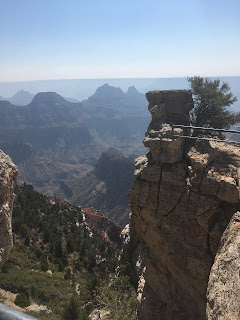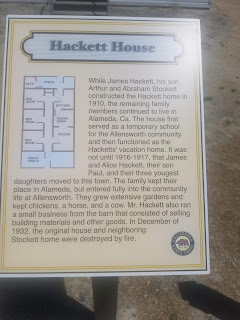After the trip, I began thinking about what I wanted to make and how. I knew I did not want to continue the work I made in undergrad for various reasons. I wanted to challenge myself to pursue something different that did not rely so heavily on narratives or ideas of the past like I had mentioned in the Allensworth post. Below are pictures of work I made over the past 6 months, some more successful than others, but all a learning experience because I gave myself an opportunity to experiment with ideas regardless of what they looked like. This post will also show some process images I had taken along the way of testing. By the end of this post, you will see my most recent body of work I have led myself to after experimenting, playing and deeply considering my experience touring the various cities, museums and galleries.


This first piece is what I considered my transitional piece between what my undergraduate body of work looked like and what would potentially be next. I removed the vessel and created a sculptural form, and then decorated the surface with patterns, colors and figures. My imagery included more than the figure, and the pattern was not dominating the entire piece. I also included a ceramic three finger comb. The content of the piece was inspired by the lack of Black queer content I saw in these spaces devoted to African American experiences, lives and histories. It felt like a proclamation to the world that both identities matter to me. I enjoyed making the piece, but I immediately knew it was not what I wanted to do, so I went back to the drawing board and made this piece below.


This piece was based off of "strange fruit". I began to experiment with glazes, objects, surface and nails more. I underglaze painted actual fruit that is considered strange by a lot of people, and then over it I drew with an underglaze pencil a lynching and a police shooting on both sides. This is arguably the most political piece I have ever made. I am very vocal about my political and social beliefs, but I never considered making political work. As a result, it sort of made me uncomfortable because the art I aspired to create and gravitated towards during this trip were never this overtly political. I wanted to maintain that interest I gained during this trip, so I decided this was not a proper step for my work either. However, this was the start of my fixation on glaze application which was something I never did prior to this piece.


This piece was still considering the theme of strange fruit, but I thought maybe I needed to step away from figural/pictoral narratives and underglaze, so I can push my form more. There were a lot of things I enjoyed and learned from this piece, but it felt very busy. I also had the honor of getting a critique with Malcolm Mobutu Smith and he gave me wonderful feedback about my work, but the one thing he said to me that stood out was that not everything has to be on one piece. I did not fully understand him, but then I went through pictures I took of work during my summer trip and realized that none of my favorite works were "too busy" with symbolism like I had a habit of doing, and realized I needed to focus in on what I wanted my viewers to visually and intellectually engage with. The following works and in progress pictures of my recent body of work are a result of this long process of trial and error, and my summer travel research:
















Through the days of testing glazes and forms and ideas, I finally decided that I wanted to make work that spoke about my Blackness in a way I have not seen it spoken about in art. I wanted to offer something new for myself and audience. I wanted my work to feel personal and private while also reflecting the publicness of myself and my Black identity. Black people and moisturizing products. Black hair, combs, picks, hair accessories like durags etc. are all easily linked to Black culture and identity which is why they are common tools for Black narratives in artmaking, but lotion is not something that is commonly seen as a "Black thing", because it isn't. However, Black folk are aware that our relationship with products like lotion are not emphasized the same way for others. For starters, if you aren't moisturized then you're ashy which means you are dusty, got dry skin, and can also mean you are ignorant, annoying or dumb. No one wants to be called or seen physically ashy, so we moisturize our skin constantly. We carry go to lotion bottles on us to school and work. "Ask the Black person first for lotion if you forget your's at home or run out." This somewhat intense but also intimate relationship we have with moisturizing products like lotion is what my work focuses on by combining a glaze I made to look like various lotions and petroleum jelly and a variety of comb styles. I also pair these with zoomorphic forms that take on identities themselves (Buffalo represents black men, Gazelle represents black women, Sheep represent black queer individuals and the Rabbit represents the general black folk regardless of gender and sexuality). I have always had an interest in historical pottery and sculpture forms and design aesthetics, so I strive to make my work have a sense of history and contemporary air to them. I do this through the forms and the use of nails representing the kongo power figures and christianity.
The cups pictured are all test cups that I practiced mark making with my lotion glaze. My next steps are taking an interest in how to apply the lotion glaze, and potentially creating abstract paintings with them like on the vessel standing on three combs. As I continue to explore the glaze and push myself I want to begin creating more sculptural and object based works with my clay and lotion glaze, as I continue to create these pottery forms. Below is a picture of me and a few pieces for your own personal amusement:

I would like to thank NCC for giving me this amazing opportunity to visit various museums and a historic site for an all black town. Unfortunately, I was unable to go to Oklahoma and participate in the all black town tour, but I was able to still gain so much valuable information from what I was able to engage with on my trip. I would not be making the work I am making now if I did not see countless of sculptural black artists working in such a concise and focused way. I have always had an issue of putting "too much into a piece", but having the pictures of work I got to see during my trip and look back on them and remind myself to be more focused and concise has been more helpful than I could ever put into words.
For anyone who wants to continue following my artistic journey as I continue to push my craft, I have an instagram account at instagram.com/ceramicsnstuff
I also have a website: ceramicsnstuff.com
Thank you for anyone who has taken the time to read these blogposts. I enjoyed being able to reflect on everything I saw over the summer as it helped me dig deeper into why I enjoyed the works I curated to be posted, and as a result helped me focus my own work. Hope yall stay blessed and are encouraged to follow me onmy journey over the years. Peace, love and happiness.



























































